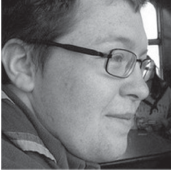7.7.4 Main Recommendations
For science diplomacy, sociotechnical imaginaries can be utilised to set common international goals whilst also, and often simultaneously, causing fissures that lead to divergent visions of the future that cannot be easily aligned. Science diplomacy is often claimed to be capable of forming collective international visions, yet science diplomacy is also in operation when scientific and technological developments are the drivers for mistrust and reactionary policies. The future is unknowable, yet it is the greatest challenge to science diplomacy making. Despite the future’s innate uncertainly, it is vital for historians, science diplomats, and scientists, to understand the power that sociotechnical imaginaries have in making the present.
What the experts think
Learn from Sam Robinson, the author of this InsSciDe case study.

Sam Robinson
Post-doctoral Research Fellow, Centre for the History of Science, Technology, and Medicine (CHSTM), University of Manchester
What has changed in the years since those imaginaries emerged?
| Read more! – General Website: (Link) – Arvid Pardo’s speech before UN General Assembly 1st Nov 1967 – (Link) – Sam Robinson (in press, 2020) ‘Scientific Imaginaries and Science Diplomacy: The Case of Ocean Exploitation,’ Centaurus. Special Issue: ‘Global perspectives on science diplomacy in the twentieth century: Actors, organizations, States’ (M. Adamson and R. Lalli, guest editors) |

The material provided under this course is licensed under a Creative Commons Attribution 4.0 International License.